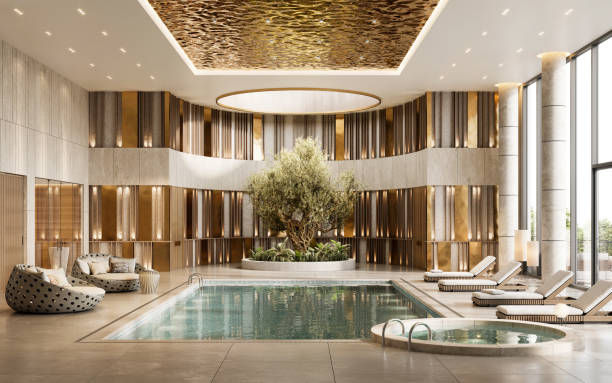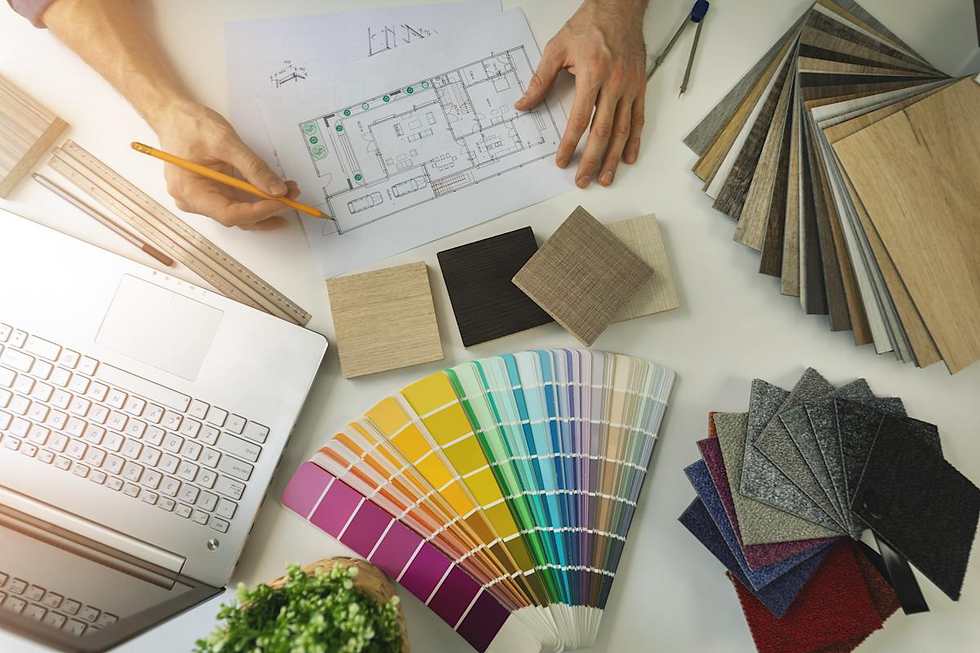Essential Elements of Effective Commercial Space Design
- Lisa Merkle
- Jun 17
- 5 min read
Creating an impactful commercial space goes far beyond essentially organizing furniture or choosing the right paint color. It requires keen arranging, a profound understanding of usefulness, and an adjustment between aesthetics and execution. A viable commercial space design not only upgrades brand character but also optimizes efficiency, client involvement, and representative well-being.
In this article, we investigate the basic components that contribute to an effective commercial space design, especially in today’s energetic trade landscape.

Understanding the Reason for the Space
The first step in design any commercial space is understanding the essential work of the space. Is it a retail environment, an office, a neighborliness scene, or a crossover workspace? Each sort of commercial property has one-of-a-kind prerequisites. A workspace for a law firm, for illustration, requests a more distinctive approach than a boutique inn or a tech startup office.
A clearly characterized reason makes a difference in direct choices related to format, lighting, furniture, and fabric choice. Businesses must also consider how the space will advance as the company develops or adjusts to industry trends.
Prioritizing Space Arranging and Flow
Maximizing Productivity Through Savvy Layouts
Efficient space arranging is at the heart of a compelling commercial design . Originators must consider activity streams, the arrangement of workstations, openness, and the interaction between private and communal regions. The objective is to make a format that minimizes blockage, empowers efficiency, and bolsters a consistent client experience.
Smart formats contribute altogether to the discernment of openness and ease of development, which is pivotal in client-facing spaces like showrooms, salons, and restaurants.
Zoning for Functionality
Creating assigned zones for particular assignments or encounters makes a difference in progress, usefulness, and, by and large, convenience. For the occasion, a co-working space may be partitioned into calm zones, collaboration zones, and casual lounges. These micro-environments backshift work styles and offer assistance to representatives and guests to utilize the space efficiently.
Integrating Brand Personality into the Design
Visual Narrating Through Interiors
One of the most capable perspectives of a commercial design is its capacity to reflect a brand’s personality. Each element from the color palette and surfaces to furniture choices and artwork should adjust with the brand’s values and mission.
This frame of visual narrating cultivates enthusiastic associations with clients and clients. A retail store that communicates maintainability through characteristic materials and soil tones, for illustration, builds belief with ecologically cognizant shoppers.
Signage and Custom Elements
Including custom signage, branded color design s, and one-of-a-kind décor components makes a cohesive see and feel all through the space. These design touches make commerce important and fortify its nearness in the minds of visitors.
Emphasizing Lighting and Acoustics
The Part of Lighting in Temperament and Productivity
Lighting is one of the most belittled, however impactful, viewpoints of a commercial design . The right lighting arrangement improves climate, underpins work capacities, and influences disposition. A combination of characteristic light, surrounding lighting, and task-specific light makes for an adjusted and versatile environment.
For office settings, driven lighting with movable color temperatures bolsters concentration amid the day and unwinding in relax regions. Retail and neighborliness spaces, on the other hand, may require lighting that emphasizes items or sets a mood.
Managing Sound for Comfort
Acoustic consultation is basic in commercial situations. Destitute sound control can lead to diversions, decreased efficiency, and a negative guest encounter. Sound-absorbing materials, acoustic boards, carpets, and mindful spatial arranging offer assistance in overseeing commotion levels, particularly in open-design workplaces or bustling restaurants.
Choosing the Right Materials and Finishes
Durability, upkeep, and aesthetics must all be considered when selecting materials for commercial ads. High-traffic regions require surfaces that are safe from wear and tear, whereas wraps must bolster the craved see and feel.
Designers regularly select materials based on both work and form whether it’s cleaned concrete for an advanced mechanical office or wealthy wood wraps in a boutique retail store. Maintainable materials are, moreover, progressively prioritized in line with ecologically cognizant commerce practices.
Creating Adaptable and Versatile Spaces
Today’s commercial situations require adaptability. Work environments, particularly, must adjust to changing group structures, innovation, and crossover work models. Mobile segments, secluded furniture, and multi-use spaces make it simpler to reconfigure formats based on advancing needs.
In retail and neighborliness, adaptable formats bolster regular advancements, occasions, or pop-up establishments without requiring a total update. This flexibility upgrades long-term usefulness and return on investment.
Technology Integration and Keen Design
Technology plays a key part in how commercial spaces work. From computerized shows and mechanized lighting to coordinated AV frameworks and getting to control, a shrewd design makes a difference in upgrading effectiveness and client experience.
Modern commercial spaces are regularly outlined with tech preparation in mind. Concealed wiring, charging stations, and shrewd climate control frameworks are all consolidated amid the arranging stage to bolster consistent day-to-day operations.
Prioritizing Client Involvement and Accessibility
Creating Comprehensive Environments
An effective commercial space design must consider the differing needs of all clients. Openness ought to never be an afterthought it ought to be built into the design from the start. This incorporates joining Hills , wide passages, open restrooms, and mindful wayfinding for those with visual or physical impairments.
Enhancing Consolation and Well-being
Comfort contributes specifically to how individuals see and lock in with a commercial space. Ergonomic seating, biophilic components like design or common spaces, and well-design communal regions all offer assistance in cultivating a sense of well-being and fulfillment among occupants.

Working with Experienced Designers
Commercial space design is a complex and layered process that requires both imagination and specialized skill. Joining forces with an experienced design firm guarantees that all elements—from the commonsense to the artistic are considered and executed at a high level.
For illustration, Lisa Merkle Design specializes in changing commerce situations into spaces that reflect brand character, maximize usefulness, and fascinate clients. With a profound understanding of aesthetics, materials, and spatial arranging, they offer custom Commercial Space Design Services in Beverly Hills that cater to a wide range of industries.
Whether it’s an office, a boutique, or a local setting, master direction makes a difference in streamlining the design, handling and maintaining a strategic distance from expensive botches, and guaranteeing administrative compliance.
Sustainability and Mindful Design
As natural awareness proceeds to rise, maintainability is getting to be a foundation of a viable commercial design . Eco-friendly materials, energy-efficient lighting, waste-reduction methodologies, and indoor air quality contemplations are fundamental to present-day interiors.
A maintainable design approach not only minimizes natural affect, as it were, but also adjusts to the values of today's socially mindful shoppers and trade partners.
Conclusion
A successful commercial space design is a mix of shape and work, narrating and common sense. It bolsters commerce objectives, improves client intuition, and creates motivating situations for everybody who strolls through the door.
From lighting and format to branding and innovation, each component plays a vital part in forming the client involvement. Businesses looking to hoist their physical space can benefit enormously from the ability of experts like Lisa Merkle Design, a trusted supplier of Commercial Space Design Services in Beverly Hills.
As the needs of businesses and their clients proceed to advance, contributing to a mindful and key commercial design remains one of the most capable ways to make an enduring effect.



Comments